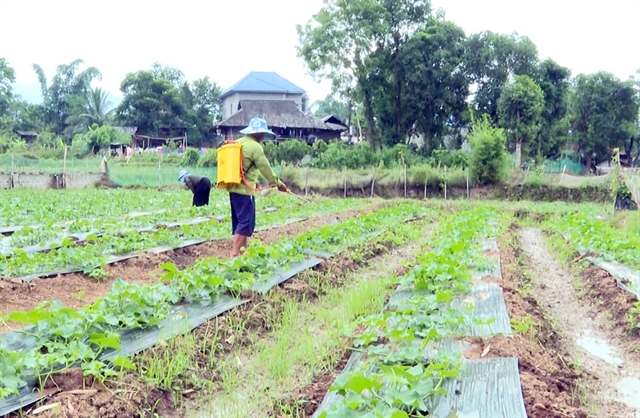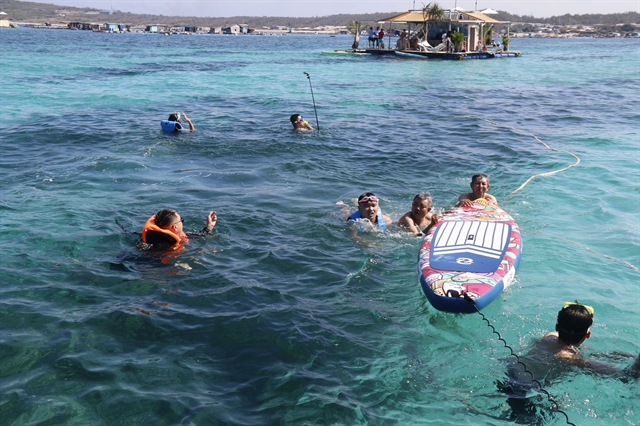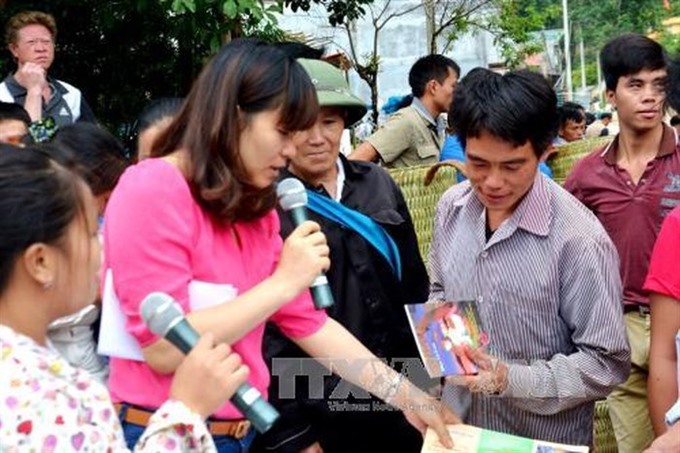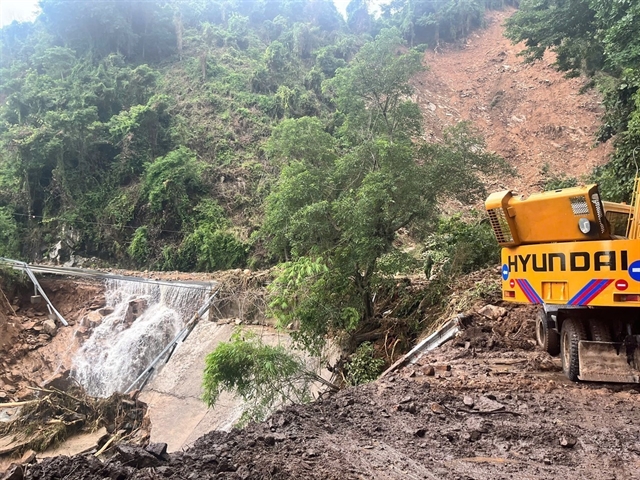 Society
Society

Over 3,000 people in Việt Nam fell victim to human trafficking between 2012 and 2017, with most cases involving cross-border trafficking.
 |
| Leaflets raising awareness on human trafficking are distributed to residents of Bát Xát District in northern Lào Cai Province, one of the hot spots for the crime. — VNA/VNS Photo |
HÀ NỘI — Over 3,000 people in Việt Nam fell victim to human trafficking between 2012 and 2017, with most cases involving cross-border trafficking.
The information was revealed by the Ministry of Public Security at a hearing of the National Assembly’s Committee of Justice on law enforcement to prevent and combat human trafficking in the five-year period on Thursday.
Deputy Minister of Public Security Lê Quý Vương said of these victims, over 2,500 have managed to escape and return home while the fates of over 500 others remain unknown.
In the 2012-17 period, 37 localities received over 1,000 denouncements relating to human trafficking criminals.
The police launched criminal proceedings against more than 1,000 cases involving over 2,000 defendants.
Chairwoman of the NA’s Committee of Justice Lê Thị Nga said human trafficking had undergone complicated developments and spread across the country.
“Most victims were women and children,” she said.
Despite the Law on the Prevention of and Combat against Human Trafficking, which came into force in 2012, its implementation still faces various shortcomings, she said.
According to the Ministry of Public Security, human trafficking is hard to detect and is more likely to happen in rural, mountainous, remote and border areas or in the neighbourhoods of ethnic minorities.
People are trafficked both within the country and across borders.
Inside the country, most victims are lured to be sold at disguised restaurants, karaoke bars or massage parlours, which actually work as brothels.
However, up to 85 per cent of human trafficking cases are cross-border ones, mostly at the borders between Việt Nam and neighbouring countries of China, Cambodia and Laos. Of these, cases, where people were trafficked to China, account for 75 per cent of the total. Some other destinations include Thailand, Malaysia and Russia.
Most female victims sold abroad are forced to marry local men and suffer from sexual abuse or coercive labour.
There are also cases where the victims are male. A report by the NA’s Committee of Justice cited a case detected by authorities in southern Cần Thơ City in which eight men were lured to China to sell their kidneys.
Deputy Minister Vương said the methods employed by human traffickers had become more sophisticated.
“There have been trans-provincial and trans-national rings,” he said.
The tactics employed to approach and lure victims had also changed, he said.
Instead of direct contact as before, criminals now approach victims through social networks or smartphones, which makes prevention and detection more difficult.
Another factor that makes human trafficking hard to deal with is that only a few criminals are caught red-handed, according to Vương.
In most cases, only when the victims have escaped and reported the culprits could the police begin their investigations.
In cases where the culprits admit their guilt and proof is available, but the victims have not been rescued and are unable to testify, prosecutors are unable to launch criminal proceedings.
Vương, therefore, proposed that in such cases the Supreme People’s Court, the Supreme People’s Procuracy and the Ministry of Public Security cooperate to allow local authorities to investigate and bring the criminals to court. — VNS




